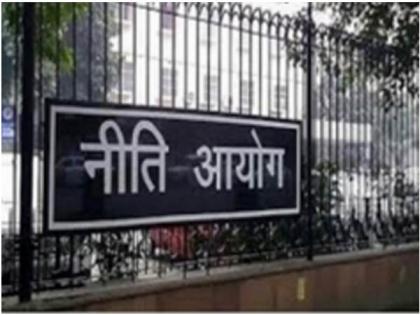J-K among front-runners in NITI Aayog's SDG Index, surpasses top states, UTs
By ANI | Published: June 4, 2021 10:11 PM2021-06-04T22:11:08+5:302021-06-04T22:20:02+5:30
Despite confronting many challenges, Jammu and Kashmir has performed better than many states and union territories (UTs) in NITI Aayog's index of states on Sustainable Development Goals (SDGs).

J-K among front-runners in NITI Aayog's SDG Index, surpasses top states, UTs
Despite confronting many challenges, Jammu and Kashmir has performed better than many states and union territories (UTs) in NITI Aayog's index of states on Sustainable Development Goals (SDGs).
The third rendition of India's SDG Index was launched by Niti Aayog Vice Chairman Rajiv Kumar on Thursday.
The report reveals that Jammu and Kashmir has even left states like Maharashtra, Telangana, West Bengal and several others behind in the NITI index.
"Jammu and Kashmir has improved its ranking in almost all sectors, its performance is excellent in the sectors like health, agricultural productions, education, renewal energy, providing civic amenities, enhancing forest cover, and ensuring gender equality during the last year," as per NITI Aayog report.
This positive stride towards achieving the targets is largely driven by exemplary country-wide performance in clean water and sanitation, and affordable and clean energy, the NITI Aayog said in a statement.
According to the Routine Immunisation Programme Dashboard (Health Management Information System), during the period April 2019-March 2020, 91 per cent of children in India in the age group of 9-11 months were fully immunized (One dose of BCG, 3 doses of DPT and OPV and one dose of Measles vaccine). The national target is to increase it to 100 per cent.
HIV incidence per 1,000 uninfected population is estimated to have declined from 0.07 in 2017 to 0.05 in 2019. Jammu and Kashmir and Ladakh lead among the UTs with HIV incidence as low as 0.02 per 1,000 uninfected people.
In the year 2019, the mortality rate of children under the age group was 38 among 1,00,000 but this has now come down to 23. Furthermore, during the last one-year percentage of institutional deliveries has increased from 66.2 per cent to 94.60 per cent.
In the year 2019, annual drop cases in the secondary level were 24.81 per cent but these cases have come down to 17.81 per cent during the last year.
Jammu and Kashmir has also exhibited an improved sex ratio of 927 females during the last year as compared to 917 in 2019.
With power generation close to 2.5 GW, the union territory leads the UTs in the generation of renewable power.
The Index for Sustainable Development Goals (SDGs) evaluates progress of states and UTs on social, economic and environmental parameters.
( With inputs from ANI )
Disclaimer: This post has been auto-published from an agency feed without any modifications to the text and has not been reviewed by an editor
Open in app